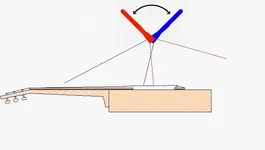P
PATRIOT2006
New member
When using this technique for acoustic guitar, steel string and nylon, do you place the mics next to each other at the same height or one on top of the other?
If micing from a couple of feet away do you generally have the mics positioned level to the instrument or higher and aiming down toward the instrument?
If micing from a couple of feet away do you generally have the mics positioned level to the instrument or higher and aiming down toward the instrument?


